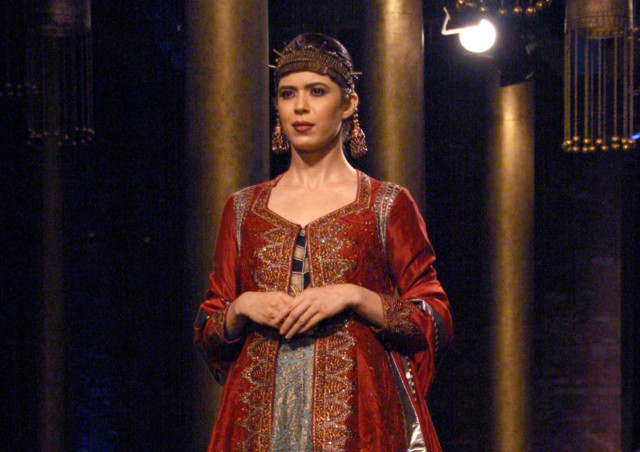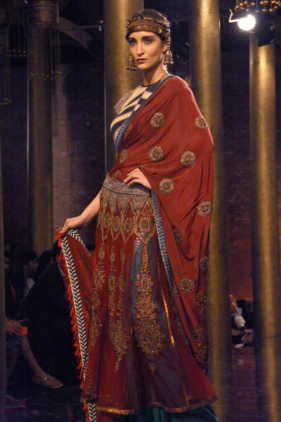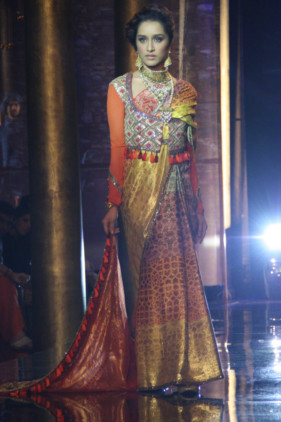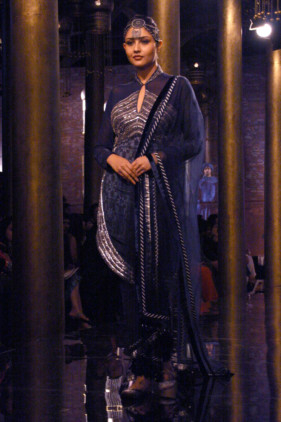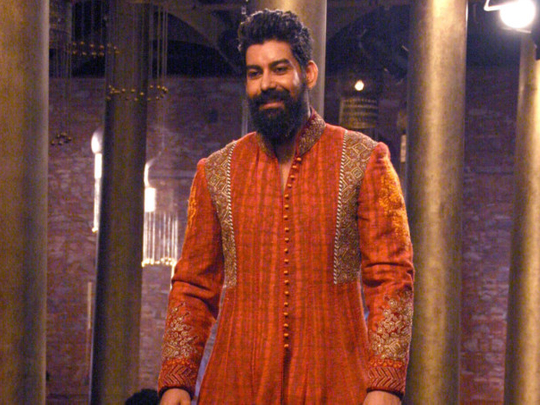
Amid fun, sensuality and design elements focusing on Indian and Moroccan culture, Indian ace fashion designer J J Valaya and his showstopper Bollywood actress Shraddha Kapoor brought the curtains down on the sixth edition of the India Bridal Fashion Week (IBFW) in New Delhi.
Valaya turned his ‘muse’ Kapoor into a nautch (a style of Indian dance) girl, who walked the ramp in a yellow saree, highlighting the sensuality and artistic skills of these trained performers.
“Today I got a perfect muse in the form of Shraddha. I feel she is perfect for my collection. Nautch girls have always fascinated me. They were intellectual, but almost like the Geishas of India. It was a beautiful period of India and very important.
“So, I wanted to do something royal around it, and combined it with a dramatically opposite culture like in Morocco,” Valaya told reporters after the grand show.
A visibly nervous Kapoor, who was also the face of this edition of IBFW, said she felt like a coy bride when she walked the ramp in a saree inspired by Moroccan motifs and Indian intricate techniques, including gota and zardozi (form of embroidery).
Proud moment
“It’s a proud moment to walk for the most iconic designers of our industry. I almost felt like a shy bride when I was walking the ramp,” she said.
The jam-packed show area, which was decorated like a palace of medieval era, also had last year’s grand finale designer Rohit Bal and actor Rahul Dev cheering for Valaya and his couture collection.
The couture line, titled ‘The Nautch of Fez’, was a combination of Indian and Moroccan culture, infused with subtle elements of Indian nautch girls of the past.
Valaya traversed through Moroccan culture with his collection and divided it into six parts — the Phoenicians, Romans, Arabs, Spanish, Turkish and Ottoman.
The motifs on outfits also spoke about the design sensibilities of these cultures, be it the purple dye technique of Phoenecia, the mosaics patchwork of Rome, geometric patterns of Arab or the famous Fez embroidery of Spain.
The collection, which included lehengas (long skirt), anarkalis (long tunic), sarees and shararas (loose pleated trousers), was created using crepe, dupion, georgette and fine velvet. The men’s wardrobe had bandhgalas (formal evening suit), sherwanis (knee-length coat) and coats teamed with tight pants and pyjamas.


